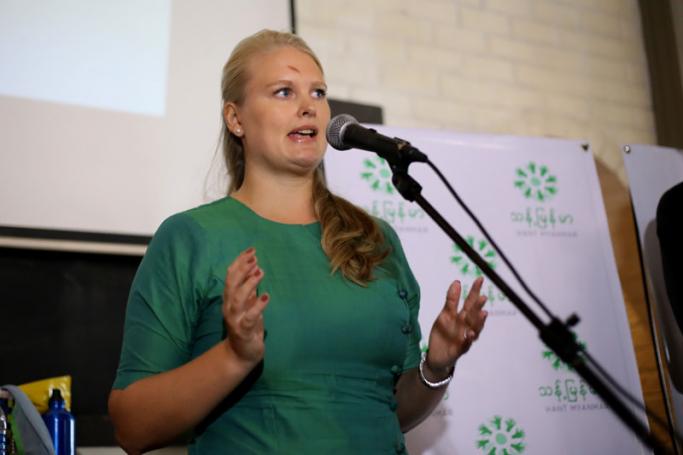According to a 2017 study published in the journal Science Advances, of the more than 6.3 billion metric tonnes of plastic waste generated over the past seven decades, about 9 percent has been recycled. The non-recycled waste ends up incinerated or in landfills, waterways, oceans and, ultimately, the human food chain. In Myanmar, where it is estimated that 200 tonnes of waste enter waterways every day, grassroots groups are springing up to urge everyday citizens to make small changes with the potential for lasting impacts.
One of these is Thant Myanmar, a volunteer-driven movement launched in March 2018 “spearheading initiatives that raise awareness of plastic pollution and mobilise action to reduce plastic waste and littering in Myanmar.” In a media briefing held Thursday in Yangon, Thant Myanmar laid out some of their strategies and hopes for a greener future, with several dozen journalists turning up at the downtown Union Bar & Grill to hear from some of the group's core volunteers and experts. One of these experts, WWF Myanmar Green Economy Programme Manager Hanna Helsingen, kicked off the event by pointing out that plastic waste is estimated to have tripled over the past five years in Myanmar.
In addition to urging the public to consider ways to cut down on single-use plastic – bags, straws and especially bottles – Helsingen laid out Thant Myanmar's plans to bring up the number of water refill stations in Yangon to 100 by June 5 to mark World Environment Day – with plans to also have these stations listed on Google Maps. “It's nice that it's in Myanmar's nature to already offer free water to many people, which is not something you see in other countries. So we've had a lot of interest early on and we're making very good progress on refill stations,” Helsingen said.
For offering some perspective on where waste is entering Myanmar waterways, founder and lead designer for social enterprise Chu Chu, Friedor Jeske, explained that in large cities 80-90 percent is dumped through a semi-controlled method, with the remainder being flushed out through water canal systems. In towns, around 60-70 percent of waste is collected and open burning is widespread, whereas rural areas see as much as 40 percent of waste disposed in water channels directly, according to Thant Myanmar. Jeske also fielded questions about what could be done policy-wise in terms of stemming post-consumer plastic waste, bringing up problems with black market bags in the case of an outright ban, and proposing taxation models that have proven successful in some European countries.
“When a plastic bag cost 50 kyat, then there is no one who will forget his hta-min-chaint (lunchbox) to go out,” Jeske said. While Myanmar definitely has a strong culture of reuse borne out of necessity, increasing development paired with a stigma associated with second-hand goods could help to breed a more wasteful culture, and one that generates far more single-use plastic.
In their efforts to engage the public in addressing plastic pollution across the country, Thant Myanmar has a host of activities planned around World Environment Day, including partnering in an effort to set a nationwide record with Myanmar Clean Up Week beginning June 1.












